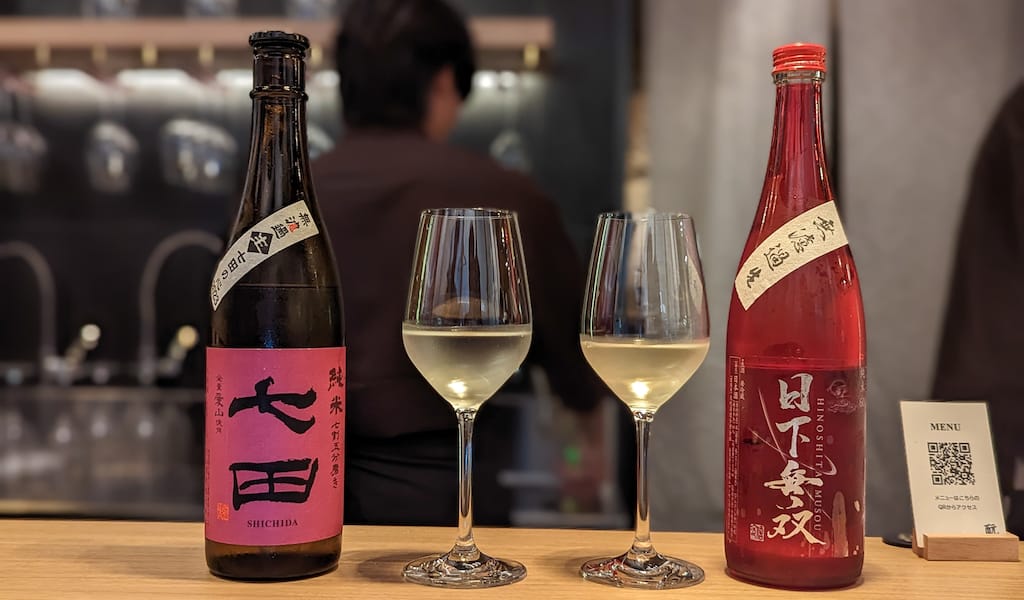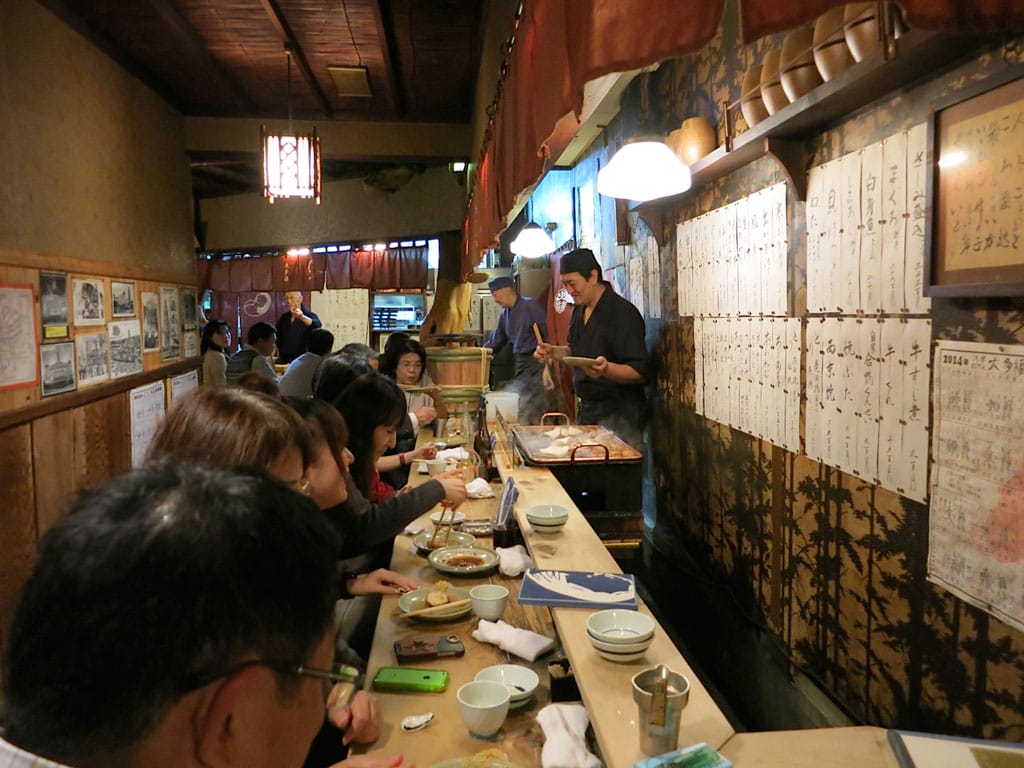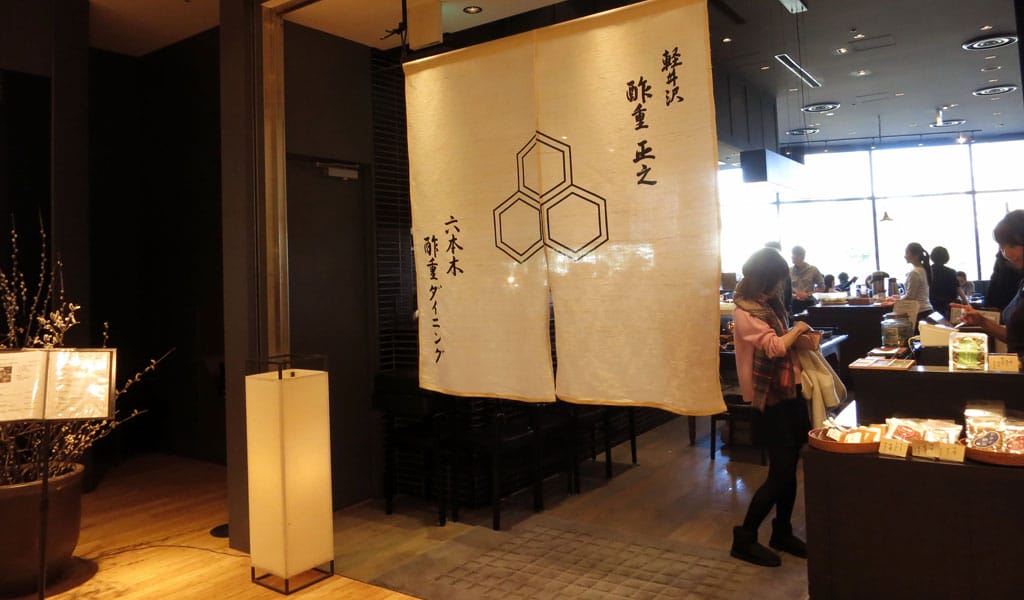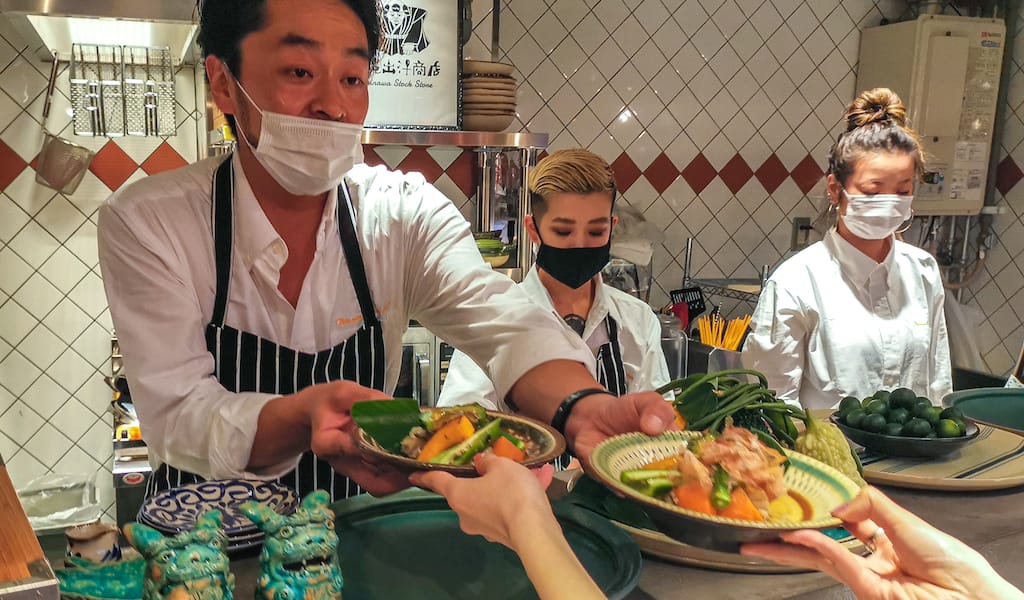“Don’t talk over the sake.” Sake evangelist Gordon Heady is holding a cup, reverentially, and pauses slightly before lifting it to his lips.
He is instructing us on how to evaluate the liquid properly. Take a sip, hold it in your mouth, breathe in slightly through your mouth, swill it round, swallow, breath out through your nose. Sit with the aftertaste. Let it develop.
It’s almost meditative.

Though the process may sound reminiscent of a formal wine tasting, drinking sake doesn’t need to be complicated. With relatively low acidity compared to wine, higher sweetness and no tannins, it can be surprisingly simple to drink. And, with a much wider array of aromas and tastes than wine, it can be fun to try and detect each one – flavors can range from robust earthy notes with hints of yogurt or mushroom to delicate pear or bubblegum sweet.
Sake is considered Japan’s national drink. Its exact origins lie in the murkiness that accumulates over thousands of years, but it’s believed that rice-derived alcohol production arrived from China alongside rice cultivation at least 2,500 years ago. This rice-derived drink was then developed over the centuries, growing into a flourishing industry by the 17th century. In 1698, for example, government records list 27,251 sake brewers across Japan. Fast-forward to the turn of the 20th century, when the industry was making efforts to improve and regulate quality, leading to the establishment of the National Research Institute of Brewing (NRIB) in 1904.
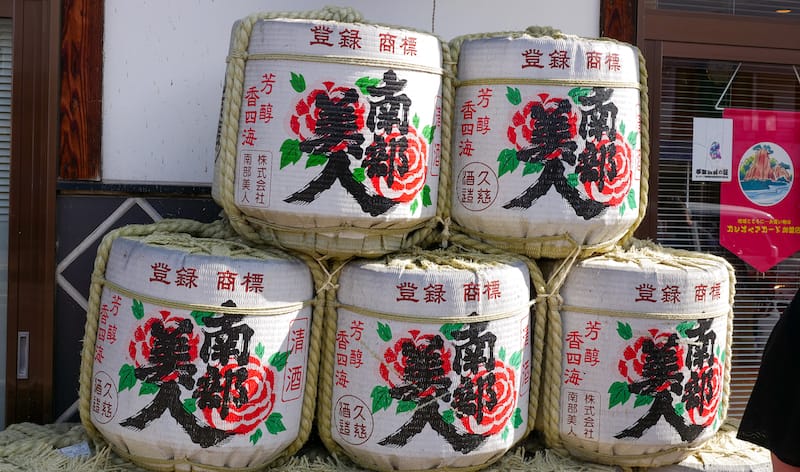
Over the centuries – or indeed, millennia – sake became deeply entwined with Japanese traditions, particularly Shintoism, an animistic religion centered on the respect and worship of nature and ancestors. Sake is one of the finest offerings for kami, Shinto gods. It’s drunk at marriages, in which the bride and groom each take three sips from three sake cups, making nine sips in total, an odd number that symbolizes the couple’s unbreakable bond. At New Year’s celebrations, a special spiced sake infused with medicinal herbs is drunk for health and prosperity for the coming year. Of course, it is also used in cooking a wide range of washoku (traditional Japanese cuisine) just like wine is used as a marinade or in stews.
Yet, outside of Japan, sake remains relatively mysterious and misunderstood. Often served in small cups called o-choko, many people mistakenly have the impression that it meant to be consumed in one gulp, finding that it is incredibly strong. Sake is actually legally required to be under 22 percent ABV, but the vast majority is 15-17 percent ABV, making it only slightly stronger than wine. What’s more, just like wine, it’s meant to be drunk with food. In fact, the science shows it’s actually a better pairing than wine.
“Sake has more amino acids, up to five times that of wine. Sake makes friends with food whereas wine is a sword that cuts through the taste of food. So sake can enhance the flavor of what you’re eating,” says Heady. “And the lack of tannins and low acidity in sake means that the food can also enhance the taste of the sake. It’s a one plus one equals three situation!”
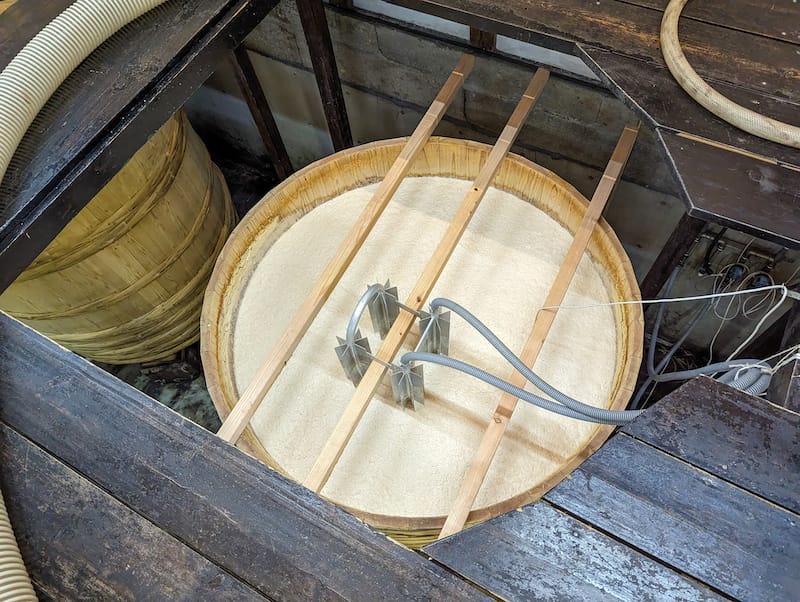
Often referred to as a “rice wine,” this name obscures a unique production process. Sake is made by taking rice and “polishing” it, removing some of the outside layers of each grain that contain proteins, lipids, and nutrients that can produce off-flavors or result in rough and heavy textures. The brew is then washed and steamed, before being divided into two parts. Around 20 percent is siphoned off to be malted with koji, a type of fungus also known as aspergillus oryzae. This is a crucial part of the process that can have a huge impact in the fermentation process going forward. Brewers then build a fermentation starter before adding this, plus more rice, koji and water into a main tank to form the moromi (mash), which will then turn into sake over a period of three to four weeks.
The process greatly differs from both wine and beer. Rice, unlike grapes, does not contain sugar. This is why koji is needed – it produces enzymes that break down the starch into sugar in a process called saccharification. When making beer, this part is achieved by the malt, and yeast is then added to kickstart the fermentation. In sake production, however, saccharification and fermentation occur at the same time, and it’s up to the skill of the brewer to balance and control the rates of both. The process is called “multiple parallel fermentation,” which sounds a little bit like something a mad scientist would mutter while thinking up a formula to save the world.
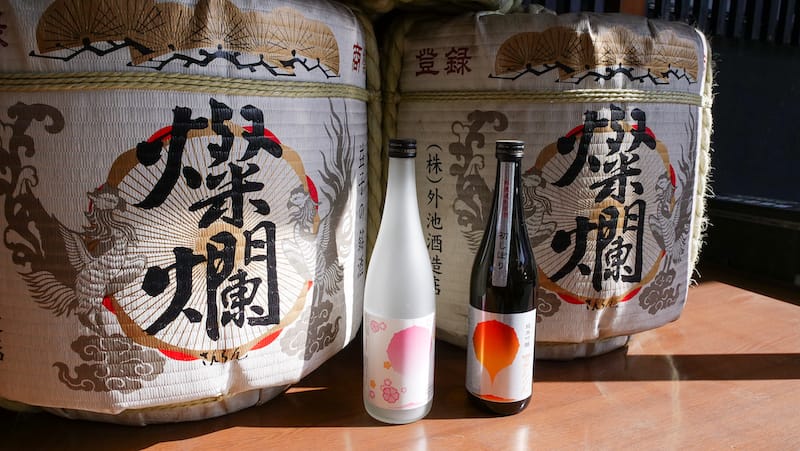
The phrase, in fact, is emblazoned on Heady’s T-shirt when we meet him to catch up over some sake. He is a former sake brewer himself. In 2013, he abandoned his native Portland, Oregon, to take up an opportunity to brew sake in Fukuoka. He subsequently apprenticed under Naohiko Noguchi, considered by many in the industry to be the most accomplished sake brewer in Japan. The experience was a highlight for Heady.
“It was amazing to work under him, and still feels so in retrospect,” says Heady, who now works on promoting Noguchi’s sake overseas. “Disciplined, focused, determined at work, but over meals, curious and engaging; warm and friendly. It was the most challenging time of my life, too, due to the various hardships. In the end, I helped a great toji [master brewer] brew sake. Did I make this sake? Or did this sake make me? The answer to both is the same.”
Noguchi is credited with fueling demand for ginjo styles of sake, being the first to sell it commercially outside of sake-making competitions. He also worked hard on reviving the traditional yamahai method that relies on natural lactic bacteria, as opposed to adding lactic acid to the fermentation starter. At age 90 this year, he claims to have given up on retirement and shows no sign of slowing down. “I am trying to become a role model for how to take on new challenges, while preserving the traditions,” of sake-making, he told the Nikkei newspaper earlier this year.
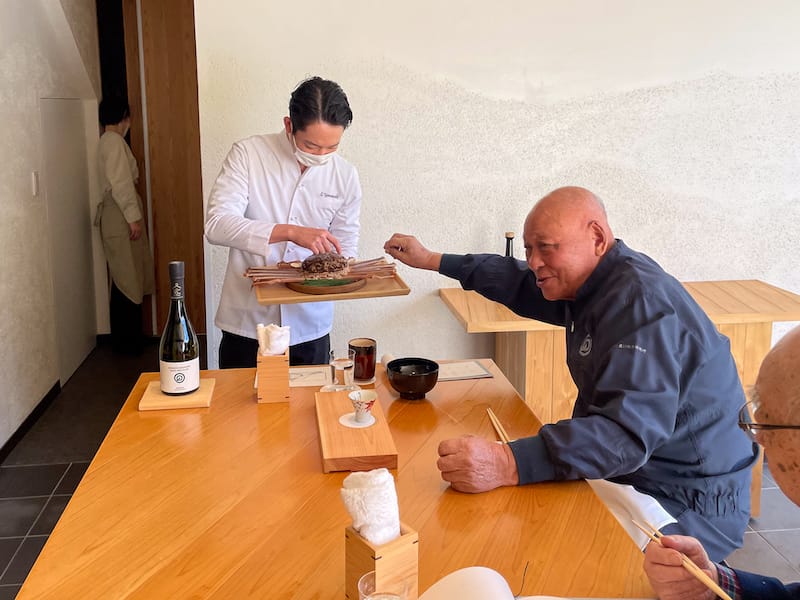
Heady is effusive, discussing Noguchi’s legacy.
“Noguchi helped so many brewers! No one knows for sure, but he trained 600-plus brewers of which approximately 20 became the toji for another brewery,” he says. “Noguchi has many devoted fans of his sake and cares deeply about how they feel about what was brewed. After a sip, are they smiling? Success comes by some from public acclaim or gold medals, but Noguchi cares about his customers and wants to brew sake to be served around the world with any cuisine.”
“I hope that every refrigerator that has either wine or beer also has a bottle of fine sake. It’s the heart of Japan.”
Training future brewers and growing international demand both represent a vital mission: the future of sake is at stake. The industry has been in decline for decades. Domestic shipments of sake peaked at around 1.7 million kiloliters in 1973, dropping to a record low of 400,000 kiloliters in 2022. During Japan’s rapid modernization in the post-World War II period, sake was produced on a mass scale as the country’s economy revved toward the top of the global leaderboard. It was essentially a cheap, harsh beverage in which quality was secondary to affordability. However, as much of Japan’s population began to enjoy more disposable income, exotic and exciting exports flooded the market. Sake was seen as a bad-tasting old man’s drink, a hangover of yesteryear.
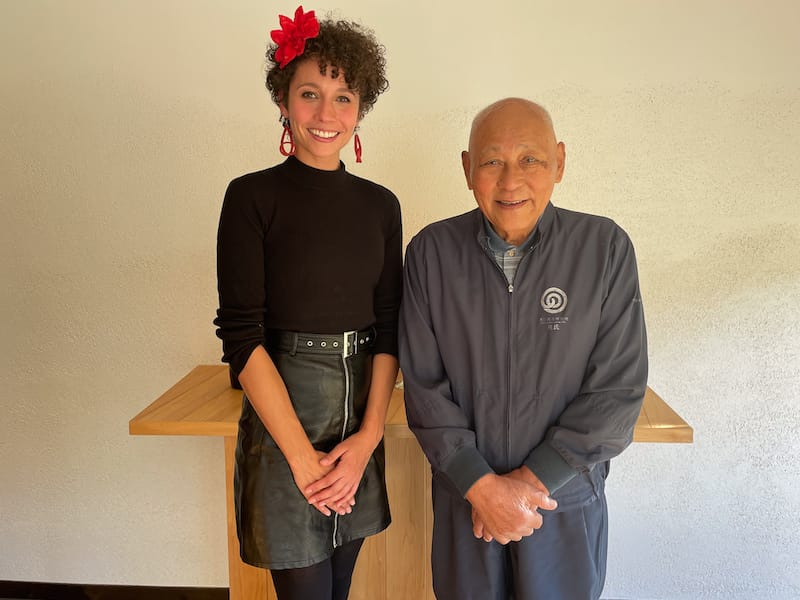
By the 1980s, the industry recognized the impending crisis and began to brew a new idea. They pivoted to focus more on ginjo sake, which involves polishing each sake rice grain to at least 60 percent of its original size, removing the outer layers in order to produce sake with lighter, fruitier and more elegant flavors and aroma, such as melon and pear.
Yet reputation is not easily built or changed, and sake has struggled to reinvent itself as something trendy. Moreover, the industry must contend with a sharply declining population alongside a rising number of the so-called “sober curious.” The trend even prompted the Japanese Tax Agency to launch a campaign in the summer of 2022 asking young people to share their business ideas to drive sake demand among their peers. The move, however, somewhat backfired, sparking fierce domestic criticism and bemused international headlines.
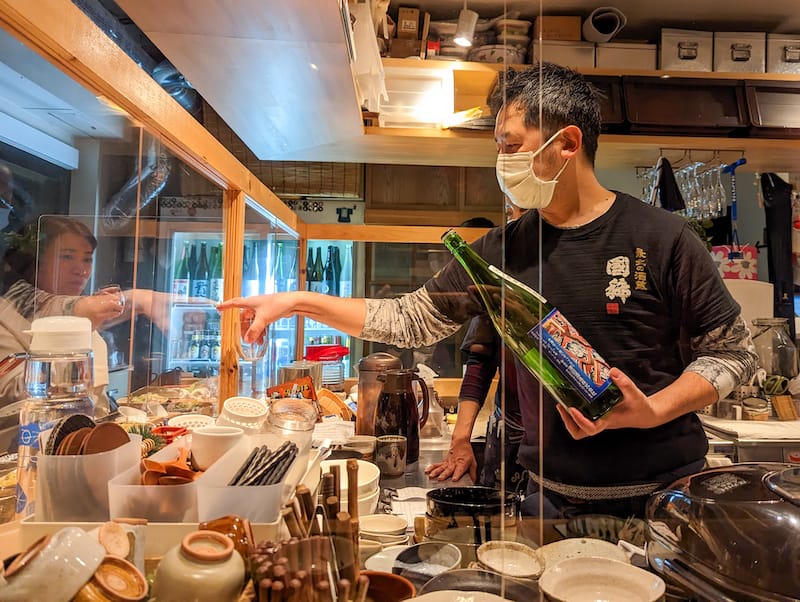
There are signs of hope for sake, which suggest it won’t be relegated to just weddings or New Year yet. The new generation of sake makers are working hard to shake up the industry. Traditionally, the president of a sake brewery deals with business matters, whereas the sake is brewed by a toji, head sake brewer, who is responsible for the sake taste. However, toji are often older men, trained in traditional schools and unwilling to experiment with new techniques. Now, the industry sees more sake professionals taking on both roles, arguing that they are able to produce sake more closely aligned with modern consumers’ tastes and the modern diet.
There’s also growing innovation within the industry. Sparkling sakes, sake made with wine yeast and summer sakes aiming to attract Prosecco drinkers are just some of the new products appearing on the market. Tokyo is seeing a rise in stylish sake shops and bar frequented by younger and female customers, who were previously an uncommon sight.
This reputational rejuvenation is also being supported by growing demand from overseas. Sake exports by value and volume grew 118.2 percent and 112.0 percent respectively in 2022, marking the 13th consecutive year of record growth. The weaker yen is partly supporting the trend, but a growing number of Japanese restaurants globally alongside a wider craft alcohol boom seeing global drinkers seek different options is helping the trend.
Heady, for one, is optimistic.
“This is the Golden Age of sake. Never before has there been such a time when consumers could enjoy such fine sake. Sake exports are booming and international people can become a huge market segment for Japanese breweries. I hope that every refrigerator that has either wine or beer also has a bottle of fine sake. It’s the heart of Japan.”
Where to Enjoy Sake in Tokyo
Tempura Dining Itoi – This Shinjuku City spot we wrote about last year offers a range of sake to pair with tempura.
Premium Sake Pub Gashue – English accessible, very friendly; decent, comforting small plates.
Kubota Sake Bar – Designed for visitors and sake novices, so very accessible. In the basement of Shibuya Parco (a very popular place to go shopping for crafts, clothes, Nintendo merch, etc.). Kubota is a Niigata sake brand but they also have fizzy, flavored sake, wine-like sake, and others.
Yata Shinjuku – A standing bar with good tasting guidance and a nice view of Shinjuku from 10F. Limited food. Solo drinkers welcome.
Kunizake-ya – Sake from every single one of Japan’s prefectures. Some interesting shochu, too. Standing bar. Friendly owner. Relaxed vibe; solo drinkers welcome here, too.
Soregashi Ebisu – Great sake and food. We recommend the menchi katsu, potato salad and seared mackerel sushi.
Akaoni – Specializes in namazake (raw, unpasteurized sake). Good food – menu will be a challenge to non-Japanese speakers and those not familiar with Japanese cuisine.
Plat Stand Moto – Good food and fun vibe in Kichijoji.
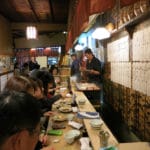 January 15, 2024 Otafuku
January 15, 2024 Otafuku
The weather is turning cold and Japan’s convenience stores, or konbini, have hauled out […] Posted in Tokyo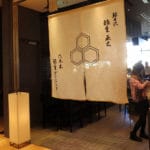 June 14, 2021 Suju Dining Rokkaku
June 14, 2021 Suju Dining Rokkaku
Many people think of miso as the soup that gets tacked onto every Japanese meal. We can […] Posted in Tokyo August 24, 2020 Eat Play Works
August 24, 2020 Eat Play Works
At a sleek counter, diners are perusing a menu of modern Vietnamese cuisine with a […] Posted in Tokyo
Published on January 12, 2024
Related stories
January 15, 2024
TokyoThe weather is turning cold and Japan’s convenience stores, or konbini, have hauled out the oden service pans and positioned them next to the cashier counters. For those not familiar with oden, the sight of assorted flotsam and jetsam afloat in a clear broth and the fishy aroma impinging on their space while paying for…
June 14, 2021
TokyoMany people think of miso as the soup that gets tacked onto every Japanese meal. We can still remember our first experience of Japanese food in the West, when the waiter brought the soup at the end of the meal, and someone thought he’d forgotten to serve it at the beginning. Any self-respecting Japanese meal,…
August 24, 2020
TokyoAt a sleek counter, diners are perusing a menu of modern Vietnamese cuisine with a Japanese twist to be paired with sake. They might begin with something light – delicate rice paper rolls filled with shogayaki, ginger-fried pork and a Japanese home cooking classic – before moving onto a modest portion of motsuni – a…







































